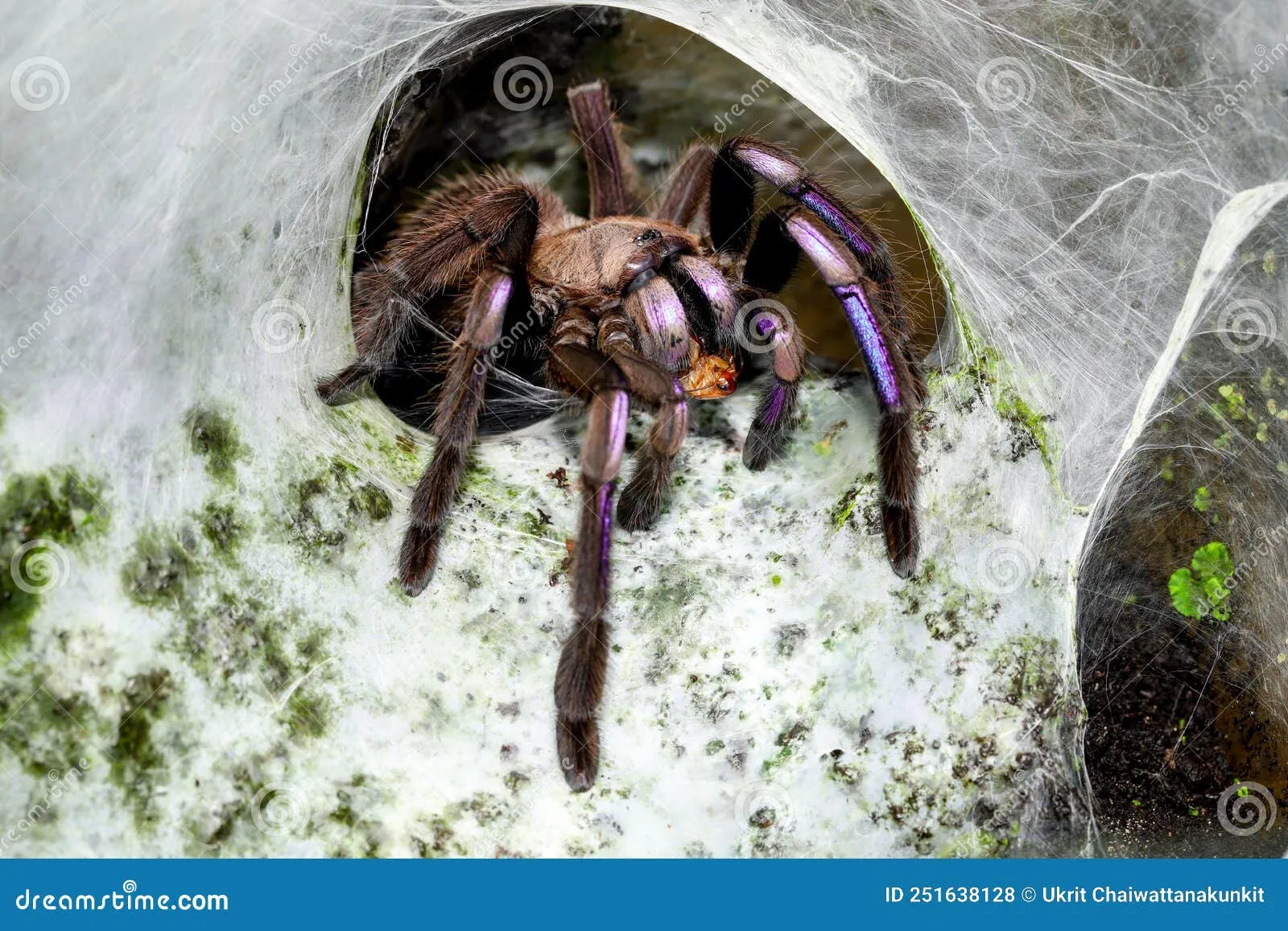Electric Blue Tarantula: Overview
The Electric Blue Tarantula, scientifically known as Cyriopagopus lividus, is a captivating and sought-after species in the arachnid world. Native to the tropical forests of Myanmar and Thailand, this tarantula is prized for its striking blue coloration, which intensifies with age. Owning an Electric Blue Tarantula is a rewarding experience, but it also demands a commitment to providing proper care. This guide will provide you with the essential information needed to successfully keep and nurture your Electric Blue Tarantula, from setting up its habitat to understanding its specific needs. This care sheet covers everything you need to know to ensure your tarantula thrives and showcases its stunning beauty.
Appearance and Characteristics
The Electric Blue Tarantula gets its name from its vibrant blue coloration, particularly prominent on its legs and carapace. The intensity of the blue can vary depending on the individual tarantula, its age, and its overall health. Juveniles may appear less blue than adults, with the color intensifying as they mature. These tarantulas are medium-sized, with a leg span typically reaching up to 5-6 inches. Their bodies are covered in fine hairs, which contribute to their overall striking appearance. It’s a terrestrial species, meaning it spends most of its time on the ground, making an enclosure setup crucial for their wellbeing.
Habitat and Housing
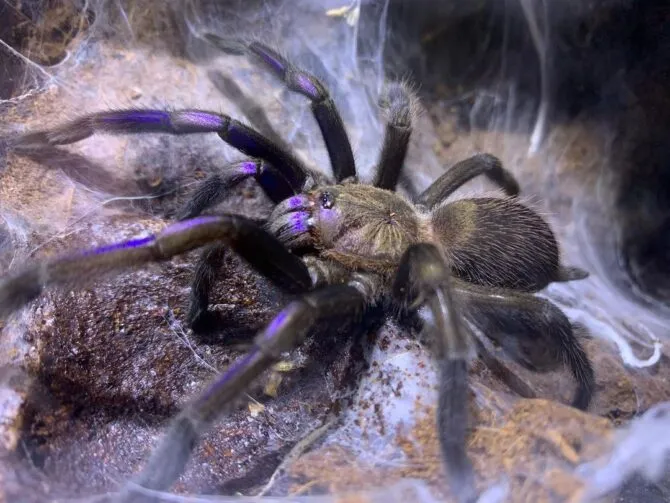
Creating the right habitat is fundamental to the health and happiness of your Electric Blue Tarantula. They thrive in a warm, humid environment that mimics their natural tropical habitat. The enclosure should provide ample space for the tarantula to move around and explore, as well as opportunities to burrow and hide. Providing a secure and appropriate habitat is not just about aesthetics; it’s essential for the tarantula’s physical and psychological wellbeing, reducing stress and promoting healthy behaviors. Remember, the goal is to replicate their natural environment as closely as possible.
Enclosure Size and Setup
A suitable enclosure for an adult Electric Blue Tarantula should be at least 10 gallons, though a 20-gallon long tank is preferable. The enclosure should be well-ventilated but secure to prevent escapes. The height of the enclosure should be sufficient to allow for the tarantula to move comfortably, but not so tall that a fall could injure it. A good rule of thumb is to ensure the enclosure is at least twice as wide as the tarantula’s leg span. The setup should include a substrate layer for burrowing, a water dish for hydration, and a few hiding places like cork bark or artificial plants to reduce stress.
Substrate and Decor
The substrate is a crucial element of the enclosure, as it allows the tarantula to burrow and provides a sense of security. A mixture of coco fiber, peat moss, and a small amount of vermiculite is ideal. This combination retains moisture well, which helps maintain the necessary humidity levels. The substrate should be deep enough (at least 4-6 inches) to allow the tarantula to burrow. Decorate the enclosure with cork bark, artificial plants, and other non-toxic items that provide hiding spots. Ensure all decorations are securely placed to prevent them from falling and potentially harming the tarantula.
Temperature and Humidity
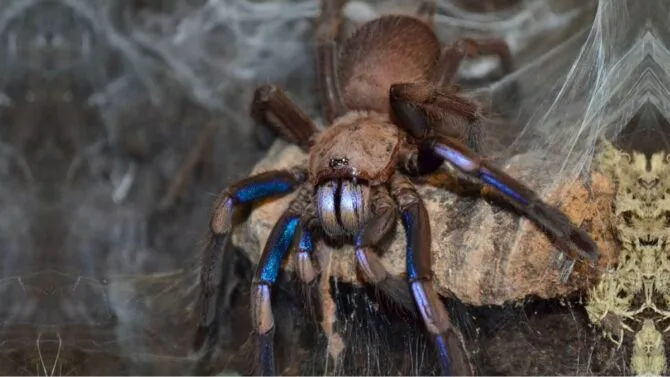
Maintaining the correct temperature and humidity levels is crucial for the Electric Blue Tarantula’s health. These tarantulas thrive in temperatures ranging from 75-85°F (24-29°C). A heat source, such as a heat mat placed on the side of the enclosure, can be used to maintain these temperatures, especially in cooler climates. Humidity levels should be kept at around 70-80%. This can be achieved by misting the enclosure regularly with water and ensuring the substrate is kept slightly moist. A hygrometer can be used to monitor humidity levels, ensuring you’re creating the ideal living conditions for your pet.
Maintaining the Right Environment
Regularly monitor the temperature and humidity levels using a thermometer and hygrometer. Mist the enclosure with water, typically every other day or as needed to maintain the desired humidity. Ensure adequate ventilation to prevent the buildup of mold and mildew. Avoid placing the enclosure in direct sunlight or near drafts. Clean the enclosure regularly, removing any uneaten food and fecal matter. Partial substrate changes should be done every few months to maintain cleanliness and prevent the buildup of harmful bacteria. The key is consistency and attention to detail; a stable environment translates into a healthy and happy tarantula.
Feeding Your Electric Blue Tarantula
Feeding is a critical aspect of caring for an Electric Blue Tarantula, providing it with the energy and nutrients it needs to thrive. Knowing what to feed, how much, and how often is essential for maintaining its health. A well-fed tarantula is a healthy tarantula, and understanding its dietary requirements is fundamental to responsible pet ownership. Feeding habits can also provide insights into the tarantula’s overall wellbeing; a tarantula that refuses to eat may be an indication of an underlying issue, like molting or illness.
What to Feed Your Tarantula
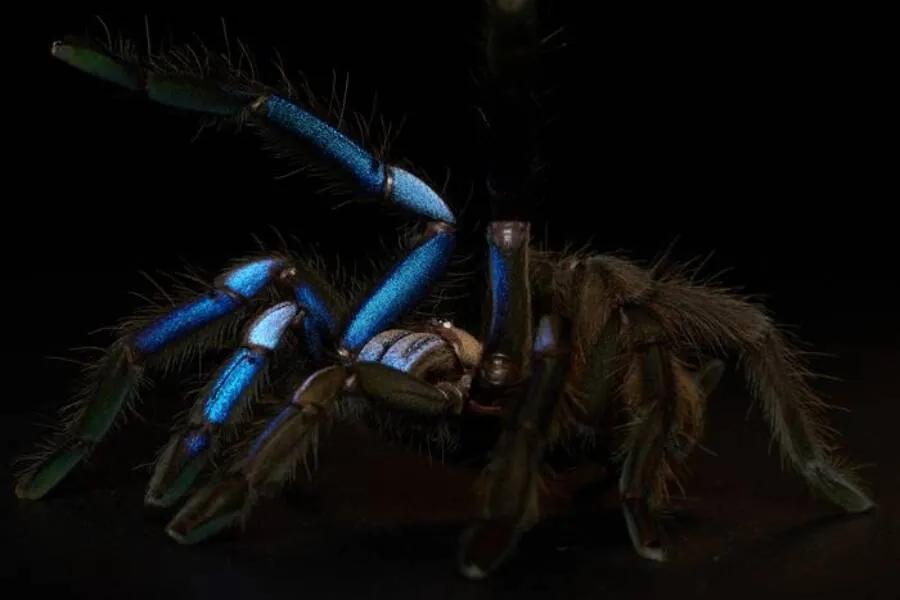
Electric Blue Tarantulas are primarily insectivores, meaning their diet consists of insects. Suitable food items include crickets, mealworms, dubia roaches, and other commercially available insects. The size of the prey should be appropriate for the tarantula’s size; generally, the prey should be no larger than the tarantula’s body. It is important to gut-load the insects with nutritious foods like vegetables and insect food before feeding them to your tarantula. This ensures the tarantula receives a balanced diet. Avoid feeding wild-caught insects, as they may contain parasites or pesticides that could harm your pet.
Feeding Frequency and Amount
Juvenile Electric Blue Tarantulas should be fed more frequently, typically 2-3 times per week. Adults can be fed less often, usually once a week or even every other week, depending on their size and metabolism. Overfeeding can lead to obesity and health problems, so it’s important to monitor your tarantula’s abdomen. A well-fed tarantula should have a plump abdomen. Remove any uneaten food within 24 hours to prevent mold and the attraction of pests. Always ensure a water dish filled with fresh, clean water is available for your tarantula.
Watering and Hydration
Providing fresh water is essential for your Electric Blue Tarantula’s survival. A shallow water dish should always be available. Make sure the water dish is not too deep, so the tarantula can easily access it without the risk of drowning. Change the water in the dish regularly, usually every few days, to keep it clean. In addition to the water dish, misting the enclosure with water helps maintain the required humidity levels, which is particularly important during the molting process. Always use dechlorinated water to prevent any harmful chemicals from affecting your tarantula’s health.
Caring for Molting Tarantulas
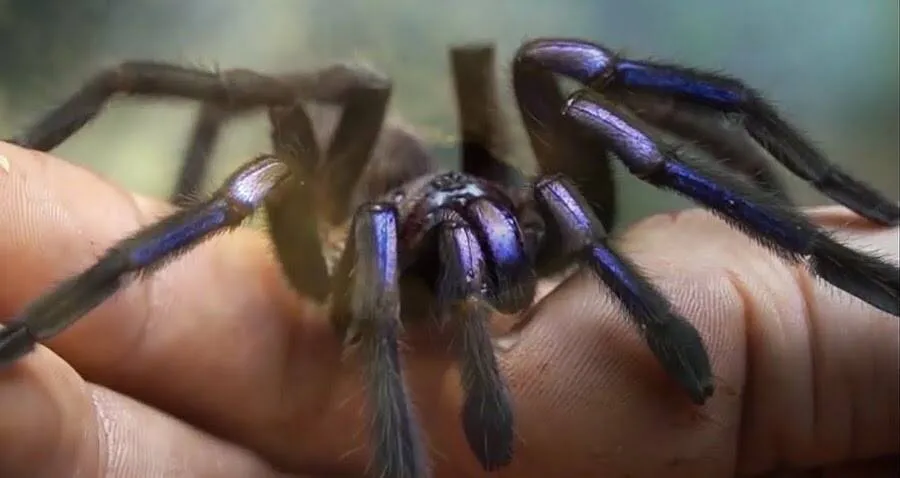
Molting is a natural process where tarantulas shed their exoskeleton to grow. It’s a vulnerable time for the tarantula, and understanding the molting process is vital for providing proper care. During this time, the tarantula is very fragile and susceptible to injury, so it’s important to avoid any unnecessary disturbances. Learning the signs of molting and how to care for your tarantula during this period will significantly contribute to its health and longevity.
Signs of Molting
There are several signs that indicate your Electric Blue Tarantula is about to molt. These include a loss of appetite, lethargy, and the darkening of their abdomen. The tarantula may also spend more time hiding or constructing a web mat in preparation. The abdomen may appear swollen and the exoskeleton may appear dull or faded. It’s crucial to recognize these signs to avoid disturbing the tarantula during this vulnerable period. Do not feed the tarantula when it is showing signs of molting.
Post-Molting Care
After molting, the tarantula’s new exoskeleton is soft and vulnerable. It will take a few days for the new exoskeleton to harden. During this time, avoid handling the tarantula or disturbing its enclosure. Offer food a week or so after the molt. The tarantula may be reluctant to eat immediately, so don’t be concerned if it doesn’t show interest right away. Provide a clean water dish. The colors of the tarantula will be vibrant after a successful molt.
Health and Common Issues

Like all living creatures, Electric Blue Tarantulas can experience health issues. Being aware of common problems and knowing how to identify and address them is crucial for responsible pet ownership. Regular observation of your tarantula and its environment can help you detect potential issues early on, increasing the chances of successful treatment and maintaining your tarantula’s wellbeing. Prevention is key, so a clean environment, appropriate diet, and proper humidity and temperature levels are essential for the health of your tarantula.
Identifying and Treating Illnesses
Common health issues include parasitic mites, fungal infections, and dehydration. Mites can often be seen as tiny moving spots on the tarantula’s body. Fungal infections can occur if the enclosure is too humid or not properly ventilated. Dehydration can result from insufficient access to water. If you suspect your tarantula is sick, isolate it and consult with a veterinarian experienced in exotic animals. Prevention is the best medicine. Maintain a clean enclosure, provide a balanced diet, and maintain the right temperature and humidity levels to prevent most health problems.
Handling and Safety
While Electric Blue Tarantulas are generally not aggressive, it’s important to handle them with care. Their venom is not considered life-threatening to humans, but their bite can be painful. Moreover, tarantulas are delicate and can be easily injured if dropped. Therefore, it’s generally recommended to minimize handling, especially for beginners. If you do handle your tarantula, it is important to do so carefully and safely.
Safe Handling Practices

If you choose to handle your tarantula, do so over a soft surface, such as a bed or a carpet, to minimize the risk of injury if it falls. Always wash your hands before and after handling your tarantula. Avoid sudden movements or loud noises that could startle the tarantula. Gently coax the tarantula onto your hand using a soft brush or by gently nudging it with a finger. Never grab or squeeze the tarantula, as this could injure it. Always supervise children when they are near or handling the tarantula.
Where to Buy an Electric Blue Tarantula
Electric Blue Tarantulas can be purchased from reputable breeders or pet stores specializing in exotic animals. Always choose a seller with a good reputation for selling healthy animals. Before purchasing, research the seller and make sure they are knowledgeable about tarantula care. Examine the tarantula carefully before buying it, looking for signs of health such as a plump abdomen, active behavior, and clean appearance. Make sure the tarantula is eating and appears to be in good condition. You might ask for photos or videos of the tarantula, or even of the tarantula eating. Also, find out the tarantula’s feeding schedule, molting history and other important information. The right choice of seller will set you and your tarantula up for a great start.
Breeding and Reproduction
Breeding Electric Blue Tarantulas is a complex process that requires a significant amount of experience and knowledge. It’s not recommended for beginners. If you are interested in breeding, research the process extensively and consult with experienced breeders. The process involves pairing a mature male and female, providing them with an appropriate environment for mating, and then caring for the eggsac. This is a specialized and often challenging area. The successful breeding of Electric Blue Tarantulas requires patience, dedication, and a thorough understanding of their specific needs.
Conclusion
Caring for an Electric Blue Tarantula is a rewarding experience for the dedicated arachnid enthusiast. By following the guidelines provided in this care sheet, you can ensure your tarantula thrives in a healthy and stimulating environment. Remember that consistency and attention to detail are key. Proper habitat setup, appropriate feeding, and consistent monitoring of temperature and humidity are essential for your tarantula’s wellbeing. Enjoy the unique beauty and fascinating behavior of your Electric Blue Tarantula and be prepared to provide a lifetime of care. With proper care, your Electric Blue Tarantula can live for many years, offering you endless opportunities to observe its unique traits and appreciate its beauty.
